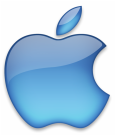 Extreme couponing is the latest budgeting trick to take popular culture by storm. With a culture that revolves around capitalism and the ability to buy endless quantities of endless goods in America, many consumers being pressed to their limits in the economic crisis are finding new ways to squeeze every last cent out of their dollar. Though the trend has been around for longer than most think, extreme couponing was made highly popular by the series currently airing on cable network TLC. The show, as many know, features coupon-savvy consumers using meticulous coupon-clipping to buy hundreds of dollars' worth of goods at everyday supermarkets, sometimes for literally pennies on the dollar. These jaw-dropping retail connoisseurs have inspired many people to get out and try extreme couponing on their own in order to save their families as much money as possible while making sure the household gets as much value as possible. One of the biggest contributors of extreme couponing can be found online. Though many extreme couponers are loyal to the paper and scissors method of finding the best bargains and deals, others find that regularly visiting a this site can provide huge deals and savings. This trend has been popularized by online services such as Groupon and other websites that email their subscribers one deal per day that will help save money in a major way. Many eschew the typical daily deal site as a source of email spam, or are not satisfied with the variety in deals. However, shoppers who subscribe wisely to a variety of sites that have the best deals tend to see quite the return in their investment, so to speak. Subscribing to a site for daily deals has also become appealing as of late because online coupons are friendlier to the environment and easier to access. Even better, there are websites specifically for online deals in local areas. Depending on what area he or she lives in, deals made available for the local organic market or wholesale distributor can be a huge help in driving down the rising cost of food and other supermarket goods. Online extreme couponing is not only easier to organize and less time-consuming, it is an extra way to boost the way consumers save their money. Finding deals on the Internet can prove to be a huge help in saving time while looking for the best sales and will ultimately pay off in the end if used wisely.
A new or old toothbrush can be used for more than brushing teeth. It can be used for cleaning the grout between the tiles on a floor. Grout is the material that is seen in the spaces around the tiles on the attractive tiled floors. The grout has a tendency to attract dirt and grime making the beautiful tile floors not look so pretty anymore. Therefore, it is important to clean the grout on a regular basis to keep the floors beautiful. Cleaning the floors can be a time consuming job, but the results can be very rewarding. By using some water, cleaning solutions, an individual's knees and a toothbrush, an individual can achieve a clean floor. However, the time it will take to clean an entire floor will depend on the room size and amount of cleaning desired. Some people consider tile floors more difficult to clean than a regular floor, but with some special tools, it can be just as easy to clean, if not easier. To get started, sweep, dust mop or vacuum the floors thoroughly to get rid of any dirt or grime. Then, put on some gloves and get ready to get down to work. Besides a pair of gloves, obtain a cleaning solution and the toothbrush such as one from a dental equipment supplier, or keep the old toothbrushes when switching to a new one and put them to good use. The old ones will still be good for scrubbing grout in between the tiles. The old toothbrushes are safer to use on the grout than using coarse bristle or wire brushes, which can damage the grout. Keep a dry towel close by while working. Now, the floor is ready to be cleaned by an eager and energetic individual. Spray an area on the grout with a cleaning solution and let the area soak for a few minutes. The work will go faster if an individual concentrates on a small area at a time. Spray a second area and let it soak while cleaning the first sprayed area. An individual will then be ready to get on his or her knees and start scrubbing the grout with an old toothbrush or one from www.bitedowndeals.com. Rinse each area with clean water after scrubbing and towel dry. Then, enjoy walking on a shining and clean tiled floor that was cleaned with a toothbrush.
A few years ago, the favored buzz words were “Web 2.0” and “Web 3.0”. One couldn't venture onto a Yahoo! home page without encountering them in spades. While these terms have largely been superseded by “the Cloud”, the ideas represented by them are still relevant. What's particularly amusing is that the vast majority of the populace never really understood what Web 2.0, Web 3.0 and Web 4.0 even meant. Let's clarify them once and for all. Web 2.0In the beginning, back when 56K modems were the norm, the web was primarily a static affair. Users requested web pages, and servers fired them back without a lot of interaction. Web 2.0 changed all that by allowing users to receive personalized responses and interactive, client-side browser effects while surfing. Aside from a distinctive, rounded-corner and glossy button appearance, Web 2.0 is different from its predecessor because it's a “read/write” web that emphasizes interaction and sharing to a far greater degree. Web 3.0Today, AJAX applications, social media and cloud storage are found everywhere thanks to the triumph of the Web 2.0 paradigm. Fast on its heels is Web 3.0, which is primarily concerned with semantics. At present, platforms like Google's search engine and its associated web crawlers can index the hell out of web pages, but it can't really categorize content based on meaning. Web 3.0 is about introducing some idea of meaning to the data that comprises the web so that programs like search engines can “understand” the meaning behind pages and queries. Web 4.0For the time being, Web 4.0 is more of a vague idea of what the future holds for the Internet rather than a concrete blueprint for where we're headed. One commonly used moniker for Web 4.0 is the “symbiotic web”, which is a vision of an Internet that allows for the interaction of people and programs based on the semantic framework introduced by Web 3.0. While Web 4.0 probably won't result in a real life version of Skynet from the Terminator movies, the birth of some kind of Artificial Intelligence is a real possibility. The TakeawayAs human beings, the temptation to categorize everything and organize it into convenient schemas for easier understanding is often too great to resist. The truth is that Web 2.0, Web 3.0 and Web 4.0 are at best broad marketing buzzwords that somewhat approximate the actual prevailing zeitgeist and reality. The fascinating thing about the Internet is that it's nearly impossible to predict what will happen next. All we can do is buckle up, enjoy the ride and see where the journey takes us.
First, invent something that consumers don’t even know that they need. Then leak details of the product in advance to tech blogs. Perhaps even leave a prototype for someone to “find,” analyze and critique. Finally, preview the final product before a roomful of adoring geeks. For years, former CEO Steve Jobs' annual appearances were the most highly anticipated event at MacWorld. Clad in his trademark jeans and black turtleneck, Jobs skillfully manipulated his fan boys and girls, always with the promise of “just one more thing.” In 2008, Apple ceased previewing products at MacWorld keynotes. Jobs’ final appearance was in January 2009. Even without his complete dominance over the proceedings, Apple’s presence still looms large every year. The buzz is palpable among attendees. It’s impossible to walk through the Moscone Center without overhearing a conversation pondering updates to the next iteration of the iPad, iPhone or MacBook Air. Apple’s hi tech pr is so pervasive, the company doesn’t have to work very hard to create product interest. Their legion of fans does it for them, particularly at events like MacWorld or D8. MacWorld 2012 In January 2012, the first MacWorld conference since Jobs’ death from pancreatic cancer, the “New York Times” reported that the event survived and thrived without Apple’s presence, powered by the sheer enthusiasm of Apple fans. IDG World Expo, the event’s organizer, changed the official name to Macworld iWorld: The Ultimate iFan Event, a move thought to recognize the increased importance of the iPad and iPhone to Apple fans. The event still markets all things Apple, albeit less directly than when Jobs’ dominated annual keynote addresses. Mac fans now attend the conference to obtain specialized technical training and purchase newly developed accessories for their Apple products. About 25,000 people now attend MacWorld each year, down from a high of 48,000 during the Jobs era. Even with the decreased attendance, word of mouth following the annual event still spreads rapidly via blogs, twitter and traditional print media outlets. D8 Conference The D8 conference, another annual southern California tech event, also caters to Apple fans. Jobs last attended D8 in 2010 and regaled conference goers with tales of new products positioned through the Apple pipeline. Jobs mentioned social gaming, home entertainment and other areas where Apple plans to expand.
|


 RSS Feed
RSS Feed